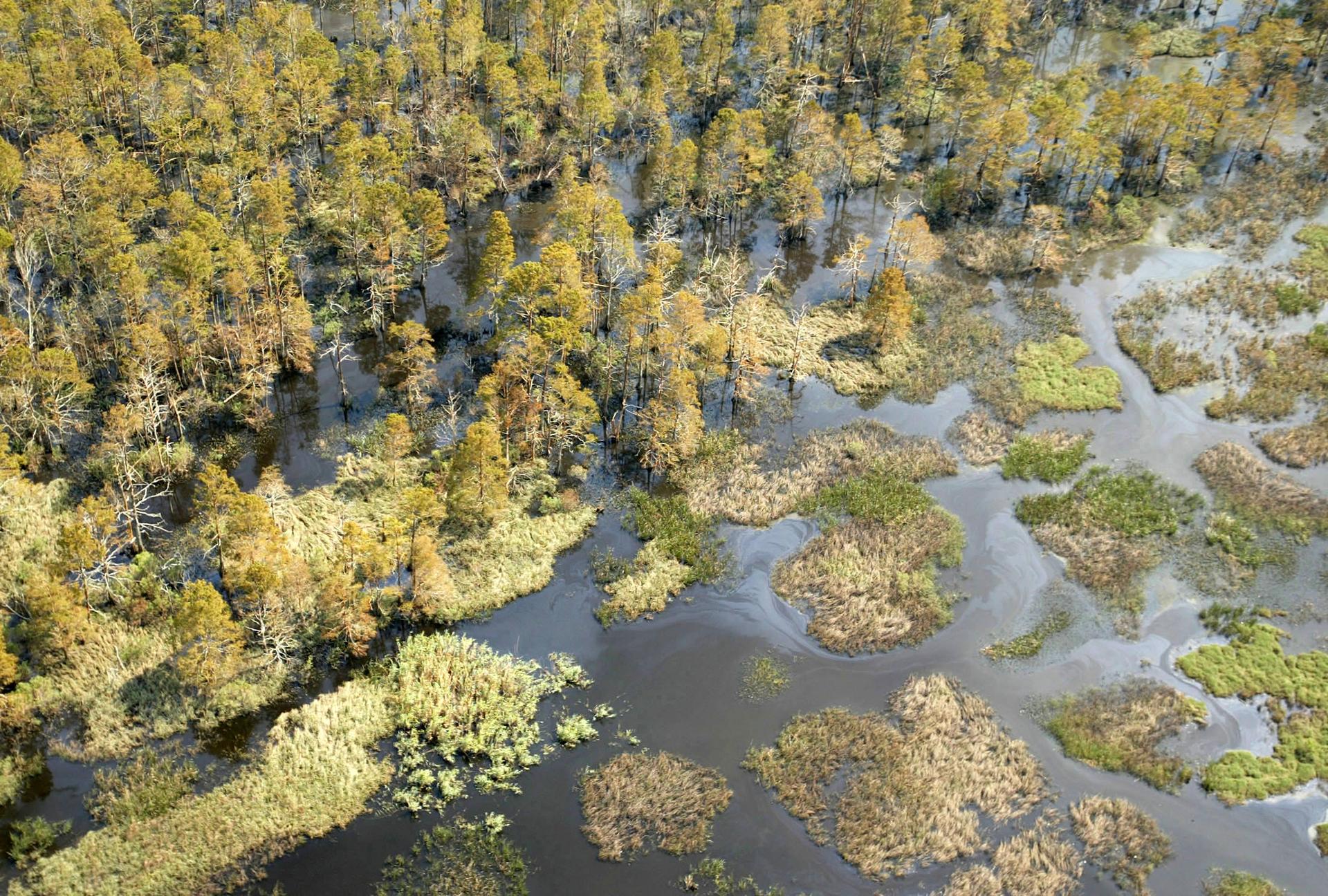How crises can strengthen cities that make the right choices
Wetlands and woods are saturated with oil, north of Lake Pontchartrain, after Hurricane Katrina struck in 2005.
Chances are, you’re always flirting with disaster. Whether you live in the drought-ridden West, the hurricane-prone Southeast, Tornado Alley in the Midwest, or the Northeast — where epic snowstorms can shut down a city — complete safety is virtually unobtainable.
But cities can weather these figurative, and literal, storms. And they can weather them by becoming resilient, says Judith Rodin, president of the Rockefeller Foundation.
Resilience, Rodin says, is “the capacity to prepare effectively, to rebound more quickly if something bad does happen, and then to revitalize and grow as a result of a stressor or a shock, rather than just return to the same.” And this capacity is becoming more and more important to the modern metropolis, given that aging infrastructures and climate change have added pressure to the already-complex task of housing and feeding millions of people.
Here, says Rodin, are three ways a city can become resilient:
Use the natural environment to your advantage
The natural environment might seem like a city’s natural enemy. Snow piles up, storms destroy homes and droughts affect residents’ daily lives. Because a lot of cities are built near water, hurricanes, tsunamis, floods and other water-related disasters are particularly likely to impact metropolises. In fact, the World Economic Forum found water-related crises rise to the top global risk for 2015, above nuclear war and pandemics.
But using a city’s natural environment to its advantage can help counteract the more violent side of Mother Nature. For example, restoring the oyster population might make the Northeast more prepared for the next superstorm. The New York-New Jersey Baykeeper society is actually building a three-dimensional oyster reef that, besides restoring oysters to their natural habitat, could reduce flooding and lower the wave energy of the next storm to hit New York. The natural environment is actually an integral part of the city, capable of being both helpful and destructive, depending on how it's cultivated.
Think outside the box
Using oysters to fight superstorms might seem pretty outside the box, but it’s boring compared to how the city of Medellín, Colombia fought crime. Prior to 2004, Medellin was awash in violence — and likely known for Pablo Escobar’s Cartel. Rodin explains that Medellín's government examined the factors contributing to the city's high homicide rate, and found that its geography could very well be the culprit.
“Medellín has a low valley floor, and it’s surrounded by high hills. Most of the slums and the poor people lived in the hills surrounding the economic strip of the city. So they built a series of gondolas coming up from the city, like we see in ski resorts … and they connected those people to jobs, to hope, to the prosperity of the city. In 10 years, crime has dropped 91 percent in Medellín.”
Outside-the-box ideas like that, says Rodin, are how cities can truly become resilient.
Don't rebuild everything the same way.
When the levees broke in New Orleans, it was a crisis long in the making. A terrible social, economic and political failure, is how Rodin puts it, one that the breakdown and flooding simply exacerbated. And Rodin is glad that New Orleans didn’t simply rebuild in the exact same way.
“The tendency is for people to build it back normal. Make it look the same and feel the same. And that just means replicating the vulnerabilities that helped create the problem in the first place.”
This year — the 10th anniversary of Hurricane Katrina — New Orleans is doing much better. It has restored its wetlands, moved some people out of the most dangerous areas, and brought entrepreneurs and tech startups to the city.
Rodin believes that crises are chances for cities to change the way they operate: to find their vulnerabilities and fix them. Crises are awful and harrowing, but they’re the new normal, and cities have to find a way to get used to them.
This story was adapted from an interview on the PRI radio show Innovation Hub.
